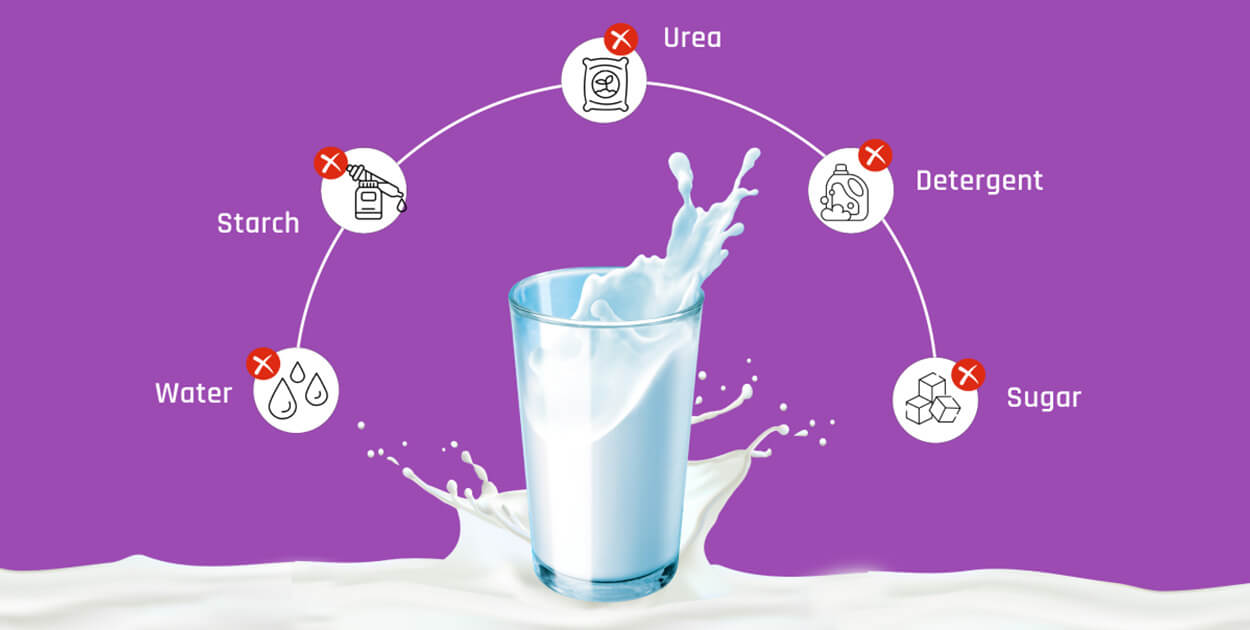The dairy industry is fraught with challenges to keep the milk you drink clean and safe. The biggest challenge, ironically, is the human factor – the temptation to make bigger profits by using chemical and other additives to enhance volume, texture and taste.
As a result, milk is adulterated at various stages in the supply chain, starting with producers, often down to your local doodh wala. Crafty milk producers and distributors have discovered ways to beat safety tests, leaving consumers to watch out for themselves. But don’t worry, we’ve got your back. Here are five tests you can perform at home to check for adulteration. They are super-simple and take only a few minutes each.
 Water
Water
Water is the most common adulterant and is used to increase the quantity of milk. While water is not detrimental to health, contaminated water is. Unscrupulous dairy owners and milk suppliers are hardly going to ensure that the water they so generously add is boiled and free of harmful microbes!
How to check for water contamination: Place a drop of milk on a smooth, polished surface. Tilt the surface sharply so that the drop begins to roll down. If it slides slowly and leaves a trail, the milk is pure. A drop of milk with high water content will flow freely and leave almost no trace.
 Starch
Starch
Take three to five teaspoons of milk in a cup. Add a few drops of tincture of iodine to the milk. If it turns blue, it contains starch. Tincture of iodine should be easily available at your local chemist.
 Urea
Urea
Pour a couple of teaspoons of milk into a test tube and add a half teaspoon of soyabean powder to it. Mix thoroughly by shaking. Let the mixture rest for 5 minutes. Then dip a strip of litmus paper into the mixture and wait for 30 seconds before removing it. If the litmus paper turns blue, the milk is adulterated with urea. Unadulterated milk does not change the colour of litmus paper.
 Detergent
Detergent
Take 10 ml of milk in a test tube. Shake the contents thoroughly. A thick layer of foam on the surface indicates the presence of detergents and/or surfactants. Pure milk forms only a fine layer of foam due to the agitation.
 Sugar
Sugar
To detect the presence of glucose/invert sugar in milk, take a Diacetric strip and dip it into milk for 30 seconds to 1 minute. If the strip changes colour, it confirms the presence of glucose. Check with your local medical store for these strips.







